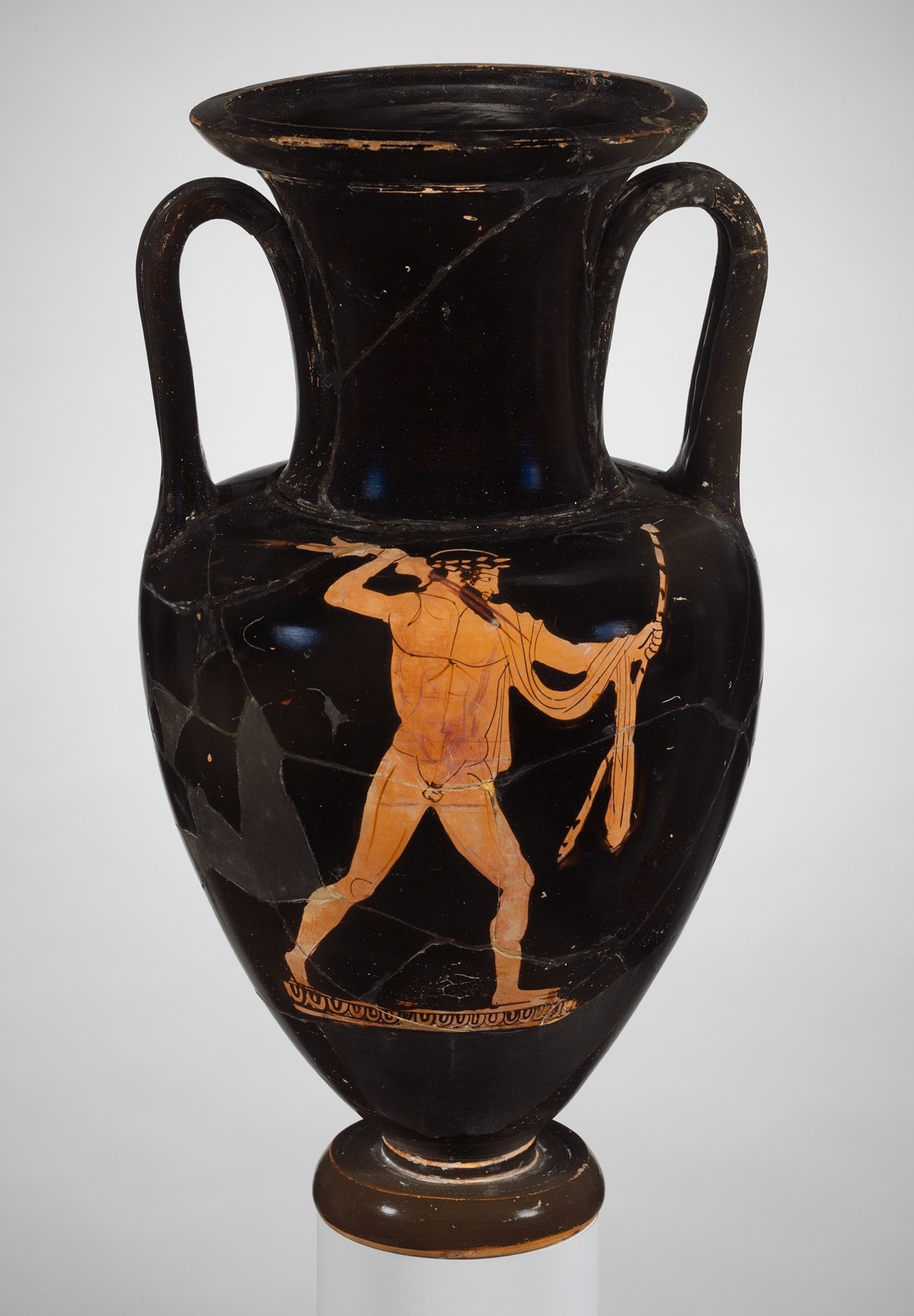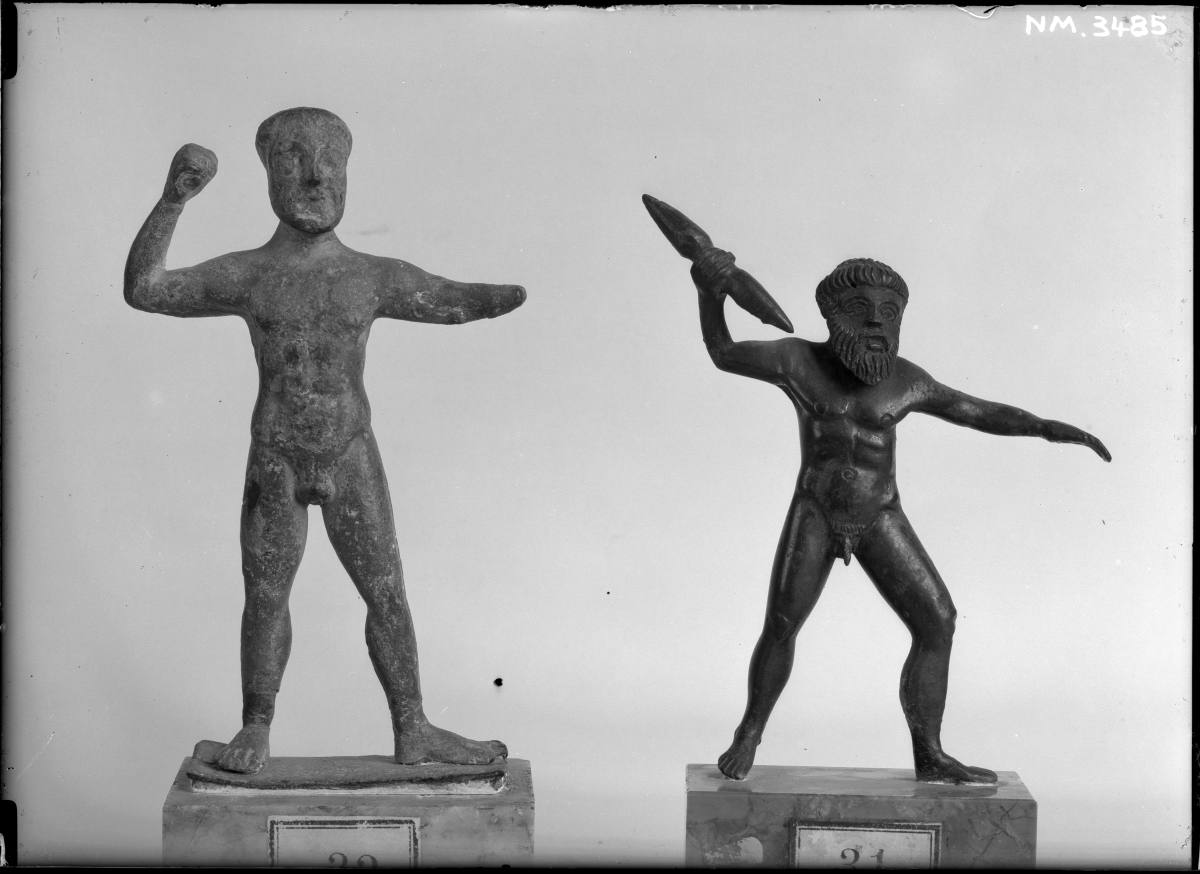Historical Resources
Zeus at Dodona
Zeus, king of the gods, was named as the prophetic god at the oracle of Dodona in the earliest sources. In Homer’s Iliad (16.233-238), Achilles refers to Zeus as ‘lord of Dodona, god of the Pelasgi’ who holds ‘wintry Dodona in your sway.’ He also describes the priests who dwell there, the Selloi, who ‘dwell around [Zeus] with their feet unwashed and their couches made upon the ground.’ In the Odyssey (14.327-30), Odysseus invokes Zeus Dodonaios and the sacred ‘high-crested oak of the god.’ The seventh-century poet Hesiod also mentions Dodona in his poem as a place that ‘Zeus has loved and [wished it] to be his oracle-centre for mankind’ (Catalogue of Women Fr 181), while Herodotus in his Histories (2.54-55) gives two accounts of the origin of the oracle at Dodona that links it to another oracle of Zeus, Zeus Ammon, at Thebes, in Egypt.

Source: The Met Fifth Avenue.
Zeus was a weather god: he was called god ‘of the rain’ (ombrios), ‘of the thunderbolt’ (keraunios), ‘of the lightning’ (astrapaios). These epithets are appropriate for the stormy weather at Dodona, and many of the bronze figurines unearthed at the site depict Zeus poised to hurl a lightning bolt. The lightning bolt was one of his typical attributes. Zeus’ other attributes, namely the royal sceptre and the eagle, have also been found at Dodona cast in bronze, and are representative of the types of dedications offered to the god. At Dodona, Zeus is described with the epithet ‘Naios’. This is found in the oracular tablets from the 4th century BCE. Its meaning is uncertain, but some have connected it to local springs at the site.
We do not know where the cult statue of Zeus was placed in the sanctuary, nor where he received sacrifice. It may have been in the sanctuary or perhaps on the acropolis, which would have been an appropriately high location. The oak tree was the focus of oracular consultation on the site: it seems to have revealed the divine will of Zeus, although it is not clear how.

Image courtesy of the German Archaeological Institute at Athens.
Zeus was not always the sole divinity worshiped at Dodona. In the oracular tablets, from the 4th century BCE, Zeus is often paired with the goddess Dione (her name is a feminine form of ‘Zeus’). Very little is known about Dione, except that she could be asked a question herself. In Hesiod’s Theogony (353), Dione is a titaness and daughter of Oceanus and Tethys, while Homer refers to her as mother of Aphrodite in Book 5 of the Iliad (5.370). A temple to Dione was built on the site in the second half of the 4th century, and both Zeus and Dione appear on coins from the 3rd century BCE.

Source: Münzkabinett - Staatliche Museen zu Berlin.
Other gods may also have been worshipped on the site. There are references in the oracular tablets and other inscriptions to Themis, Demeter, Aphrodite and the Naiads, as well as Dionysus, Apollo, and Herakles. As the site became more built up, the worship of some of these gods may have been marked with individual temples and appropriate dedications.
References
- Buxton, R. 1994. Imaginary Greece: The Contexts of Mythology. Cambridge: Cambridge University Press.
- Eidinow, E. 2007. Oracles, Curses, and Risk Among the Ancient Greeks. Oxford: Oxford University Press.
- Graf, F. 2015. ‘Zeus’. Oxford Classical Dictionary, 30 July. Available at https://doi.org/10.1093/acrefore/9780199381135.013.6949. (Accessed 1 November 2021).